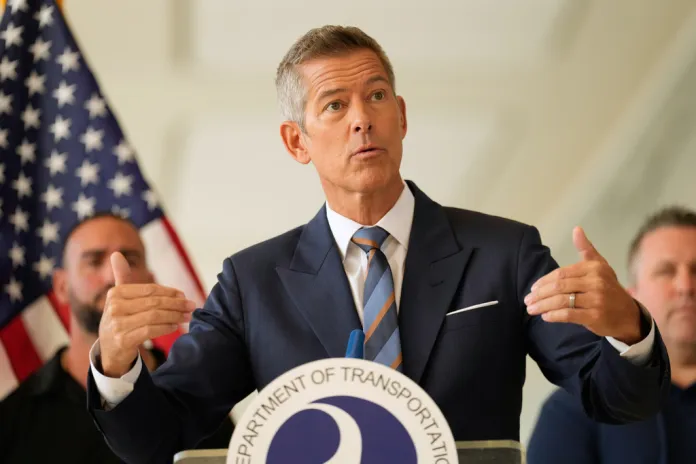Transportation Secretary Sean Duffy announced a 10% reduction in flights at 40 locations due to the government shutdown, placing pressure on thinly stretched air traffic controllers.
In a Wednesday press conference, Duffy spoke of the difficulties being experienced by U.S. aviation due to the government shutdown, particularly the strain on air traffic controllers. The vital personnel have been required to work without pay, forcing the Department of Transportation to take desperate measures.
“I anticipate there will be additional disruptions, there will be frustration. We are working with the airlines. They’re going to work with passengers, but in the end, our sole role is to make sure that we keep this airspace as safe as possible,” Duffy said. “The administrator is going to talk about all of the tools we’re going to deploy. One of them, though, is going to be that there is going to be a 10% reduction in capacity at 40 of our locations.”
He explained that the decision was “data-based,” finding the 40 locations where the pressure is the worst.
“This is not based on what airline … has more flights out of what location. This is about where is the pressure and how do we alleviate the pressure,” Duffy said.

The figure of 10% was given “based on the pressure that we are seeing,” he later added.
Duffy was joined by Federal Aviation Administration Administrator Bryan Bedford, who further elaborated on the decision.
“But we do recognize that the controllers have been working fastidiously for the last five weeks with this huge burden over their head, of lack of compensation, and we are starting to see some evidence that that fatigue is building in the system in ways that we feel we need to work towards relieving some of that pressure,” Bedford said.
“We have decided that a 10% reduction in scheduled capacity would be appropriate to again, continue to take the pressure off of our controllers, and as we continue to see staffing triggers, there will be additional measures that will be taken in those specific markets. Again, I think it’s a holistic plan,” he added.
Bedford conceded that there’s “no perfect science here,” but their calculations determined that a 10% reduction at 40 locations where pressure is greatest is the best course of action.
GOVERNMENT SHUTDOWN BECOMES LONGEST IN US HISTORY
“That doesn’t mean that we won’t come in and surgically do more, if more is required, or if we see maybe we’ve overcorrected, we can certainly take some of the mitigation out,” he said.
Problems with air travel are among the most visible and severe effects of the government shutdown, which has dragged on into the longest in U.S. history.
